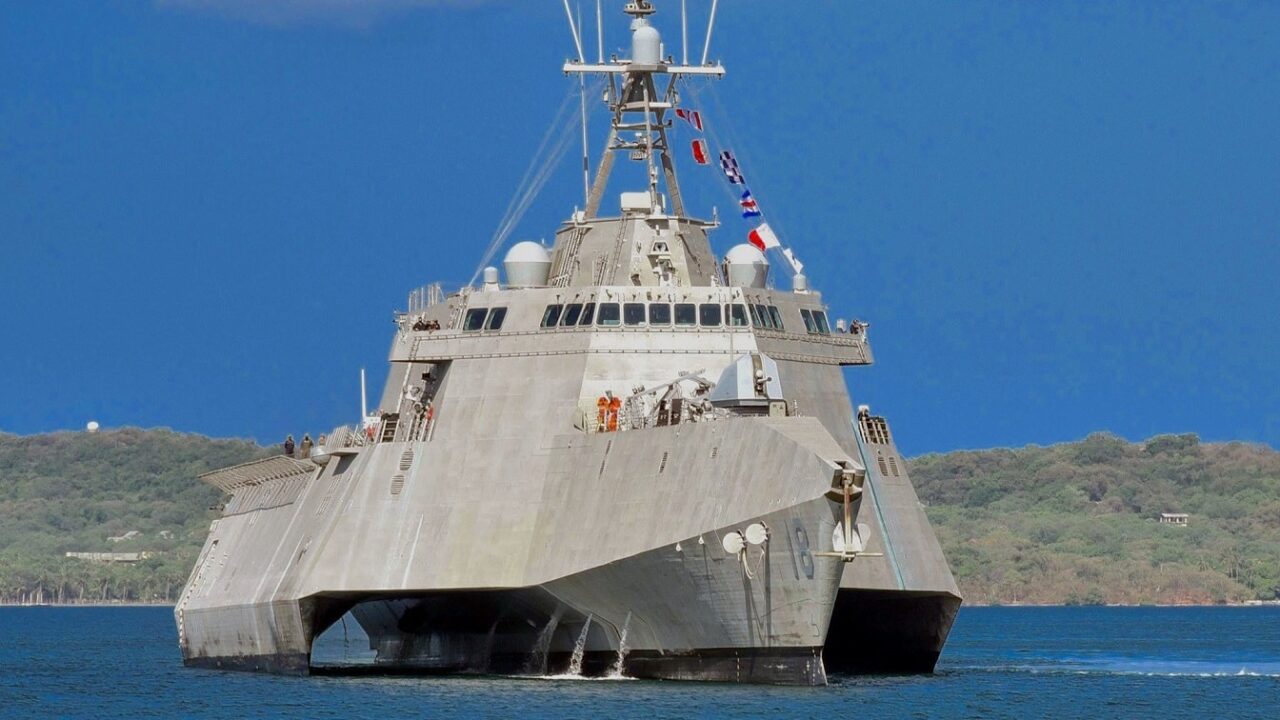Joint Air-to-Ground Missile (JAGM) Coming to US Naval Ships Soon: Sometimes, we are a little hard on the US Navy. Shipbuilding is not what it once was. Delays plague the construction of submarines, aircraft carriers, and other vessels.
And the future strength of naval aviation is not assured. Many critics are coming out of the woodwork to increasingly become naysayers about the maritime branch. But a new development is cause for optimism.
A battle-tested missile and high-tech launcher could give the naval strike mission a boost in the arm and has officers and enlisted sailors licking their chops about the future.
The JAGM Is One Hot Commodity
I’m referring to the Joint Air-to-Ground Missile (JAGM) system. This projectile is a barn burner sure to strike fear into the enemy. Not only featuring a long-range high-explosive warhead that could do adversaries a trick, the JAGM now has an advanced rapidly-reloaded quad-launcher to go on ships to give the Navy another way to punish the bad guys. This system could take out the deadly carrier-killing anti-ship missile launchers that the Chinese use so well for their anti-access/ area denial strategy that has naval planners concerned about the future fight in East Asia.
Operator Can Select a Valuable Dual-Mode Seeker that Can Blast the Enemy
The JAGM “offers a dual-mode seeker, allowing greater tactical flexibility and seamless integration with various naval platforms. Successfully tested against maritime threats, the JAGM is positioned to boost the operational footprint of the US Navy,” according to the Sustainability-Times.
Works on Software from the Combat-Proven Vertical Launch Systems
The JAGM Quad Launcher, or JQL, multiplies the JAGM’s efficacy. It can not only fit on ships but could also be fastened to U.S. Marine Corps vehicles. It uses the design from the Navy’s MK 41 Vertical Launch System—itself a robust launcher. The Vertical Launch System has an open-system architecture that enables the JQL to build on existing software for the quad launcher to be deployed on vessels and vehicles.
Quad-JAGM Launcher Can Be Deployed on a Wide Range of Ships
The JQL can fit on ships as small as corvettes or as large as frigates. It can even be deployed on patrol craft. “The launch control system can be integrated with local and remote weapon control systems using wired and wireless interfaces. Leveraging existing JAGM and VLS designs and procedures for weapon handling and loading ensures that JQL can be safely and effectively operated by the warfighter,” according to a Lockheed Martin fast sheet.
The JAGM is similar to the Apache attack aircraft’s Longbow Hellfire anti-tank missile, which is so effective for the Army. Unlike the Longbow Hellfire, which employs a single-mode seeker, the JAGM has a dual-mode seeker for enhanced accuracy and lethality.
Littoral Combat Ships Will Be Given a Boost
The Longbow Hellfire had actually been deployed on Littoral Combat Ships. The JAGM and its JQL will give Littoral Combat Ships (LCS) an option that is more likely to destroy enemy vessels and ground targets, which is just what the LCS needs—more capabilities that can take out missile sites, radars, and command and control centers.
However, the JAGM is not only for land threats; it can also be used against enemy ships and aircraft. The naval JAGM is made on existing Longbow Hellfire production lines, so Lockheed Martin does not have to create new manufacturing facilities. One thousand JAGMs have already been produced for use on Marine Corps AH-1Z Viper attack helicopters. The quad launcher brings the JAGM to Navy ships and smaller craft for 21st-century threats that the Navy is worried about.
The JAGM is the next step in addressing threats from China. US Navy vessels need as much strike capability as possible. A potential conflict in the Indo-Pacific will be a missile duel between the Americans and the Chinese. The more missiles the United States can bring to the fight, the better. If they can be deployed on smaller ships like the LCS, a threat multiplier gives sailors new options to deliver violent action against the enemy.
Another great thing about the JAGM is that it has been thoroughly tested in air-launch roles, so the quad-launcher can strike an assortment of targets that will emphasize speed, efficiency, and interoperability among the Army, Marine Corps, and Navy.
One aspect of the JAGM that will be so valuable is against enemy unmanned craft. The Navy’s carrier strike groups are forced to react with expensive munitions like the Standard Missile-6 and the Standard Missile-2 to shoot down drones. These weapons are expensive to utilize. The F-35C stealth fighter is using Sidewinder missiles to take out drones too from the Houthi rebels in Yemen. This is not the most cost-effective or efficient method to address these modern threats.

Littoral Combat Ship. Image Credit: US Navy.
But the JAGM is made to better target drones. They are less expensive, and many have been produced for the Army and Marine Corps. Once they are deployed on support ships in a carrier strike group, the Navy will have another means to address remotely piloted aircraft from the enemy.
The JAGM and its quad launcher on navy ships will be a difference maker. This robust and versatile missile can go after ground targets, opposing vessels, and aircraft. Interoperability is a plus, and it can be manufactured without new facilities. The Navy needs some good news, and the JAGM can help silence the critics who are worried about the delivery of military hardware that can turn the tide in a missile fight with China or drones from the Houthis in Yemen.
About the Author: Dr. Brent M. Eastwood
Brent M. Eastwood, PhD is the author of Don’t Turn Your Back On the World: a Conservative Foreign Policy and Humans, Machines, and Data: Future Trends in Warfare plus two other books. Brent was the founder and CEO of a tech firm that predicted world events using artificial intelligence. He served as a legislative fellow for US Senator Tim Scott and advised the senator on defense and foreign policy issues. He has taught at American University, George Washington University, and George Mason University. Brent is a former US Army Infantry officer. He can be followed on X @BMEastwood.

